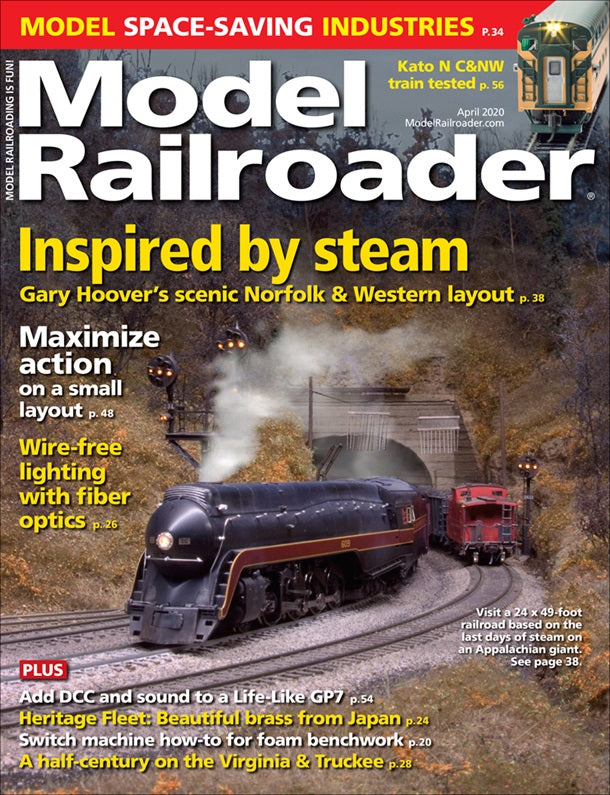Love it? Add to your wishlist
Your favorites, all in one place. Shop quickly and easily with the wishlist feature!
[message]
[title]
[message]

Announcement Date:
Guaranteed Pre-Order Due Date:
Expected Delivery Date:
Individually Boxed:
A half century on the Virginia & Truckee
by Dave Rickaby
For many baby boomers, the path to model railroading started with a Lionel or American Flyer train set under the Christmas tree. But Donn Tolley's hobby journey started in 1963 when serving in the U.S. Air Force in Japan. He went into a store and stumbled upon a selection of brass locomotive next to the jewelry counter. After looking over the inventory, he purchased a brass HO scale Porter 2-6-0 Mogul for $10.
When Donn returned to stateside in 1964, he built his first HO scale layout on a 4 x 8 sheet of plywood. Another 4 x 8-foot sheet of plywood was added when Donn and his family moved to Wisconsin two years later.
Modeling space-saving industries
by Tony Koester
If there's a common characteristic shared by almost every model railroader, it's lack of space. Whether we have a small shelf layout or a basement empire, there's never enough square footage to do justice to everything we'd like to model.
Among the most important items on our must-have list are those that support the purpose of our railroads. A scale model railroad should reflect the characteristics of its full-size counterpart. That includes its reason for being, its sources of livelihood, and the industries that supply or use the carloads that make running trains worthwhile.
Celebrating steam's last stand
by Gary Hoover
Noted railroad photographer O. Winston Link dubbed the Norfolk & Western Ry. of the late 1950s "The Last Steam Railroad in America." That moniker was also the title of a book published by Harry N. Abrams in 1995, that republished many of Link's iconic, mostly night photos of the waning days of N&W steam power. Those photos, along with the charm of railroading through the Appalachian mountains, inspired me to plan and build my latest 24 x 49-foot HO scale N&W model railroad.
Building Wingate in O scale
by Tony Koester
Part 4: Maximizing the play value while operating in a confine area
You're called for the KC local, second-class train No. 45, at Frankfort, Ind. It's marked up for its usual 7 a.m. departure and due to arrive at the other division point, Charleston, Ill., at 1 p.m. But that won't happen today or any other day. The law allows 16 hours to make the run, and it may take close to that again today; even the passenger trains, Nos. 9 and 10, with only three scheduled stops between division point stations, require almost three hours to cover the Third Subdivision.
Model Railroader has been the leading model train magazine for the past 75 years. Each month, we bring you step-by-step modeling projects, fascinating photo tours of model train layouts, unbiased product reviews, new product announcements, tips from the experts and much more!
177 W Main St
Atlanta, IN 46031
765-292-2022
support@mrmuffinstrains.com
Sign up for our newsletter and be the first to know about coupons and special promotions.
© 2025, MrMuffin'sTrains Powered by Shopify
